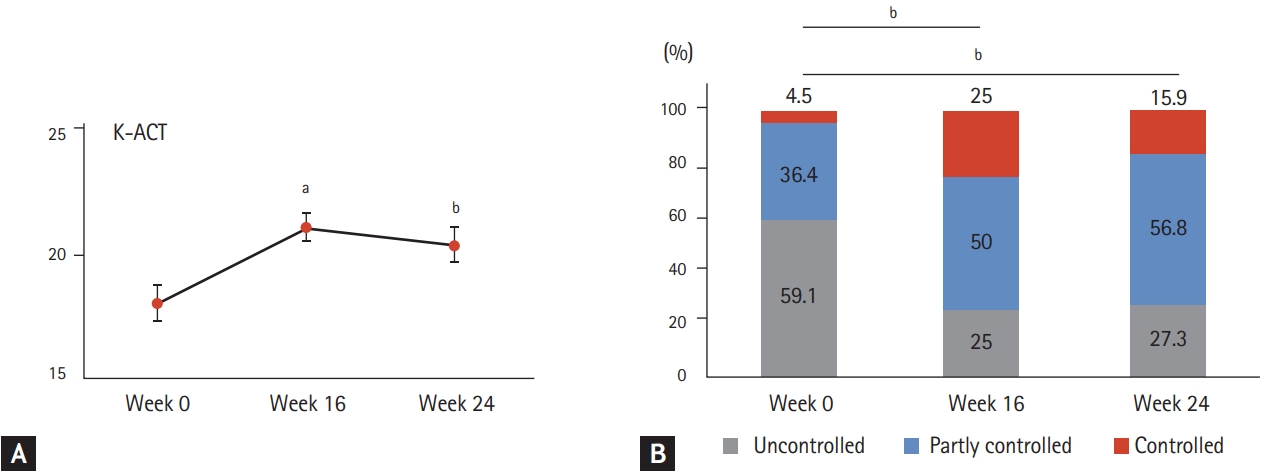Effect of omalizumab as add-on therapy to Quality of Life Questionnaire for Korean Asthmatics (KAQLQ) in Korean patients with severe persistent allergic asthma
Article information
In the article cited above, there was an error in Figure 3B. A corrected version of Figure 3B is attached.

Korean asthma control test (K-ACT) at week 0, 16, and 24. (A) Mean ± standard error of the mean K-ACT. (B) Asthma control levels. K-ACT was improved after omalizumab treatment, and the proportions of “partly controlled” and “controlled” on week 16 and week 24 were higher than those at week 0. ap < 0.001, bp < 0.005 compared to K-ACT at week 0.
We apologize for any inconvenience that this may have caused.